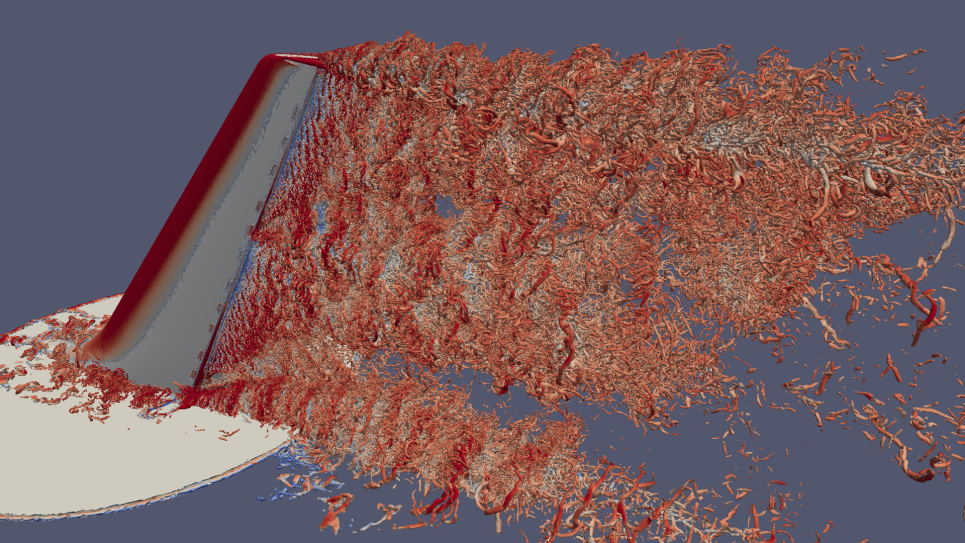
Large-Eddy Simulation of a Commercial Transport Aircraft Model
This project seeks to perform large-eddy simulation (LES) of flow over a realistic aircraft geometry. The team’s aim is to demonstrate, for the first time, the predictive capability of low-dissipation LES methodologies for practical external aerodynamics configurations. The major obstacle in accomplishing this goal is the presence of energetic near-wall eddies with diminishing length scales as one approaches the wall. Resolving such small but dynamically important near-wall eddies is infeasible even with the supercomputers to be introduced in the next decade. The team is addressing this issue by modeling the effect of the small-scale near-wall turbulence on the large-scales resolvable fluid motion in the outer portion of the boundary layer. This concept of wall modeling is now deemed indispensable for enabling predictive but affordable LES of practical aeronautical flows. However, application of wall-modeled LES (WMLES) to date has been confined largely to studies of canonical flows involving relatively low Reynolds numbers and mostly two-dimensional geometries. To this end, the team plans to conduct WMLES of the National Aeronautics and Space Administration (NASA) Common Research Model (CRM), which is a widely used community research model for a commercial transport aircraft. High-fidelity simulation of the NASA CRM is considered a grand challenge problem for computational fluid dynamics.
This project aims at producing the first demonstration of low-dissipation LES codes with the ability to perform scale-resolving calculations of a practical 3D external aerodynamics configuration. This milestone would point a new path to future aircraft design and engineering analysis, where low-dissipation LES has long been excluded for cost and stability considerations despite its superior predictive capability.

